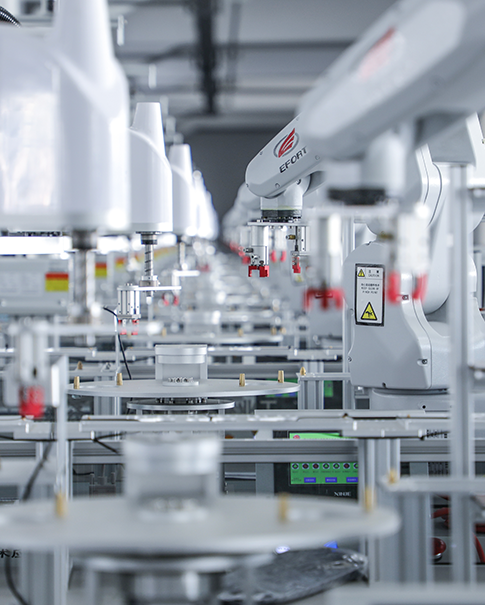Schneider Electric’s Strategy for AI-Driven Data Center Management
Schneider Electric has significantly shifted its focus from traditional hardware solutions in energy management to becoming a major player in industrial software development. As AI continues to shape industries, data centers are under immense pressure to handle vast amounts of operational data. Schneider’s strategic shift towards software solutions allows businesses to stay ahead of the demands posed by AI-driven applications, with a strong emphasis on scalability, efficiency, and adaptability.
The Evolution of Data Center Management
In the past, data centers relied on CPUs for computational needs, but the rise of AI has introduced new challenges. The increasing demand for higher rack densities, especially to accommodate AI workloads, has led to a significant shift in the industry. Schneider Electric’s global solution architect, Todd LeBlanc, emphasizes that the move from CPUs to GPUs is essential for the scale AI demands, as massive computing power is needed to keep up with AI’s rapid processing needs.
This transition also affects cooling strategies. While traditional data centers primarily used air cooling, the growth of AI necessitates liquid cooling solutions. As AI workloads generate substantial heat, more advanced cooling techniques are required to manage the higher densities and performance of AI-driven hardware.
Addressing the AI-Driven Heat Generation
AI applications often require bursts of massive computational power, leading to higher equipment density and, consequently, more heat. Schneider Electric’s response to this challenge is twofold: firstly, by designing efficient systems that manage power distribution and cooling, and secondly, by integrating advanced software tools that help optimize the management of these resources.
Schneider’s solutions, such as the high-density NetShelter SX enclosures, aisle containment, and rack PDUs, are designed to support AI’s demanding infrastructure while keeping energy consumption in check. These updates not only help meet the operational requirements but also ensure regulatory compliance in the face of increasing environmental concerns.
Software Solutions to Meet AI’s Growing Demands
Schneider Electric’s unified operations center (UOC) plays a central role in managing AI-driven data centers. By providing a "single pane of glass" view, the UOC enables operators to monitor and control all systems efficiently. This comprehensive software suite is powered by real-time anomaly detection, which analyzes multiple variables to detect irregularities early, reducing the need for a single alarm trigger.
Moreover, predictive maintenance powered by AI algorithms ensures that equipment failures are anticipated before they occur. This proactive approach minimizes downtime, extends the lifecycle of critical infrastructure, and helps optimize limited maintenance resources, an essential aspect of AI-heavy operations.
Scalability, Flexibility, and Adaptability for Future Needs
As data centers continue to evolve to support AI technologies, scalability, flexibility, and adaptability have become essential components for future-proofing infrastructure. Schneider Electric’s software solutions are designed with these factors in mind:
Scalability: Schneider’s software is highly dynamic and adaptable, allowing for maximum scalability across both existing (brownfield) and new (greenfield) data center environments. This flexibility allows teams to efficiently monitor systems while adhering to industry standards.
Flexibility: The ability to integrate with third-party hardware and software systems is a key feature. Schneider Electric ensures that its software can work with a variety of devices and technologies, from PDUs to asset management tools, to ensure smooth interoperability.
Adaptability: As new technologies emerge, such as the growing use of MQTT protocols and API integrations, Schneider’s software is designed to evolve with changing communication needs, allowing for seamless integration into future data center designs.
Schneider Electric’s evolution from a hardware-based energy management company to a leader in industrial software development highlights the increasing importance of adaptable, scalable, and flexible solutions for modern data centers. By addressing the unique challenges presented by AI, such as higher heat generation, increased energy consumption, and more intense computational demands, Schneider Electric is helping data centers future-proof their operations. Through advanced software solutions, real-time monitoring, and predictive maintenance, Schneider Electric ensures that data centers are ready to tackle the AI-driven future while maintaining efficiency and performance.
Available every working day from 8:00AM to 8:00PM Contact us to place an enquiry
-
Direct contact
-
Email us
Reply within one working day -
Visit us
32D Guomao Building, No.388, Hubin South Road, Siming District
Disclaimer : Salesplc sells new and surplus products and develops channels for purchasing such products. This website has not been approved or recognized by any of the listed manufacturers or trademarks. Salesplc is not an authorized distributor, dealer, or representative of the products displayed on this website. All product names, trademarks, brands, and logos used on this website are the property of their respective owners. The description, explanation, or sale of products with these names, trademarks, brands, and logos is for identification purposes only and is not intended to indicate any association with or authorization from any rights holder.
Copyright @2024 SalesPlc Limited. Sitemap
/ Blog
/ XML
/ Terms And Conditions
/ Privacy Policy
 Network Supported
Network Supported
















 32D Guomao Building, No.388, Hubin South Road, Siming District
32D Guomao Building, No.388, Hubin South Road, Siming District +86-18030235312
+86-18030235312 sales8@askplc.com
sales8@askplc.com